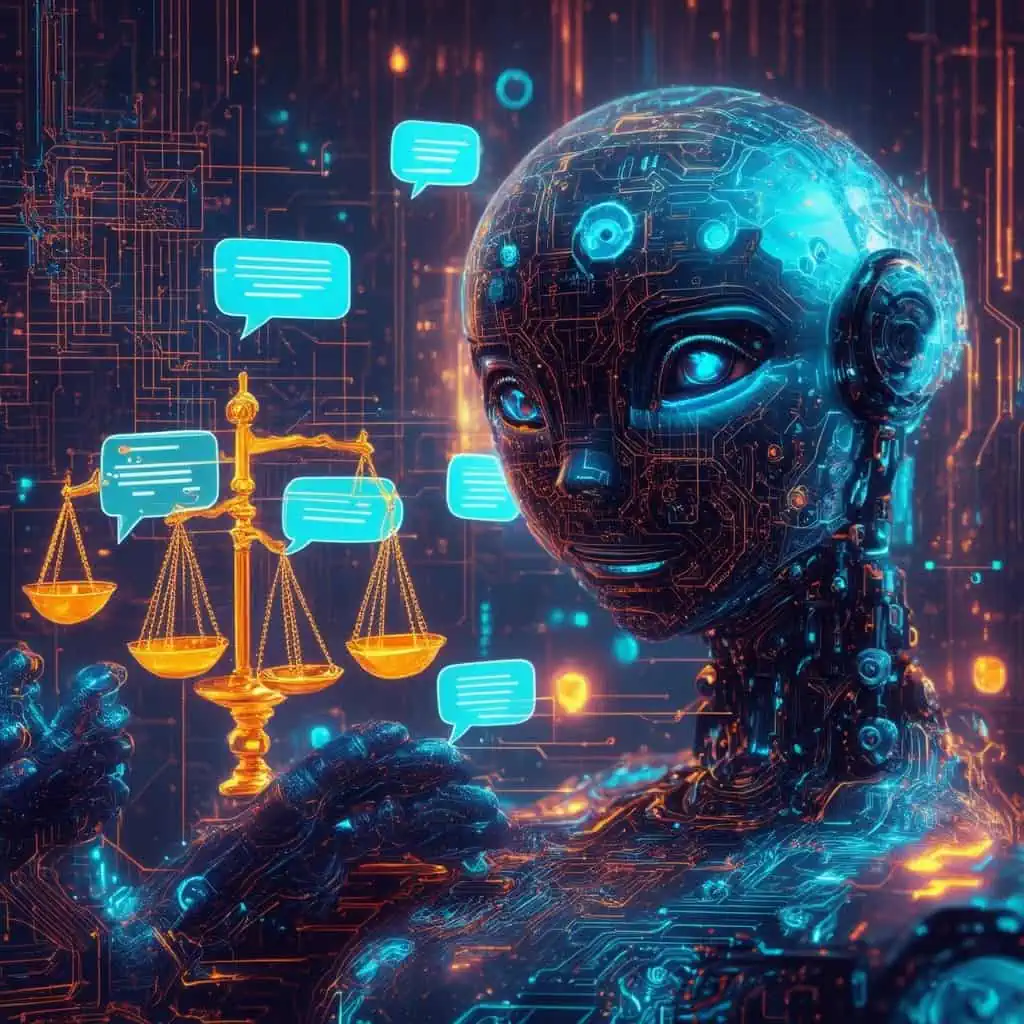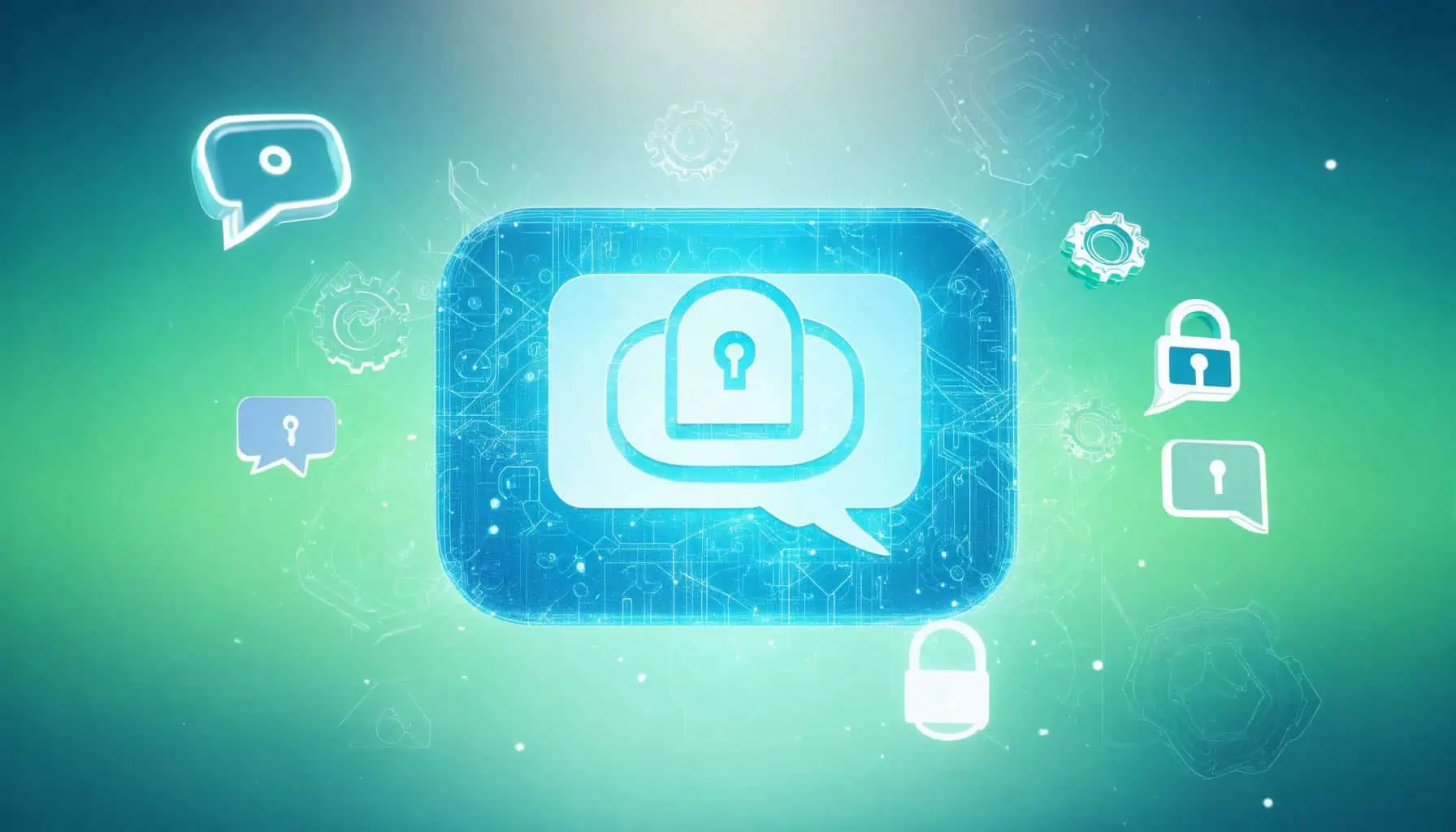Key Takeaways
- Discover the best free AI chat bot APIs like IBM Watson, Dialogflow, and Microsoft Bot Framework for enhancing customer engagement.
- Learn how AI chatbot APIs can automate customer interactions, providing 24/7 support and improving user satisfaction.
- Understand the legalities surrounding AI bots, including compliance with regulations like GDPR and TCPA for responsible use.
- Evaluate the features of various chatbot APIs to find the one that best fits your business needs and integration requirements.
- Utilize best practices for integrating free chatbot APIs into your website to optimize user experience and streamline communication.
In today’s fast-paced digital landscape, the demand for effective communication tools has skyrocketed, making the AI chat bot API an essential asset for businesses and developers alike. Whether you’re a startup looking to enhance customer engagement or an established enterprise aiming to streamline operations, understanding the nuances of various chatbot APIs is crucial. This article will guide you through the intricacies of selecting the right AI chat bot API, exploring options that are not only free but also compliant with legal standards. We will delve into the benefits of utilizing a free AI chat bot API, compare top recommendations, and address pressing questions such as, “Is ChatGPT API free?” and “Are AI bots legal?” By the end of this exploration, you’ll be equipped with the insights needed to make informed decisions tailored to your specific needs, ensuring you harness the full potential of AI technology in your projects.
Is there any free AI chatbot API?
Yes, there are several free AI chatbot APIs available that can enhance your website’s user interaction. These APIs provide robust functionalities that allow businesses to engage effectively with their customers. Here are some notable options:
- IBM Watson Assistant: This free AI chatbot API provides a robust cloud-based natural language processing service. It enables developers to create conversational interfaces for websites and various communication channels, leveraging advanced AI technology to understand user queries effectively.
- Dialogflow by Google: This powerful tool allows developers to build conversational agents using natural language understanding. The free tier offers essential features for creating chatbots that can integrate with websites, mobile apps, and messaging platforms.
- Microsoft Bot Framework: This framework provides a comprehensive environment for building chatbots. It includes a free tier that allows developers to create and deploy bots across multiple channels, including websites and social media.
- Rasa: An open-source framework for building AI chatbots, Rasa offers a free version that allows for extensive customization and control over the chatbot’s functionality. It is particularly suited for developers looking to implement machine learning capabilities.
- Tidio: Tidio offers a free chatbot API that integrates seamlessly with websites. It combines live chat and chatbot functionalities, making it easy for businesses to engage with customers in real-time.
- Chatbot.com: This platform provides a free plan that allows users to create chatbots for websites. It features an intuitive interface and various templates to help users get started quickly.
- ManyChat: While primarily focused on Facebook Messenger, ManyChat offers a free tier that allows users to create chatbots for Messenger and websites, facilitating customer engagement through automated responses.
- Landbot: This no-code chatbot builder offers a free plan that enables users to create conversational experiences for websites. It focuses on visual design, making it user-friendly for non-developers.
- Botpress: An open-source chatbot framework, Botpress allows developers to create and manage chatbots for free. It offers a rich set of features, including natural language understanding and analytics.
- Flow XO: This platform provides a free tier for building chatbots that can be deployed on websites and messaging platforms. It offers a range of integrations and automation capabilities.
For more detailed information and to explore the specific features of each API, you can refer to their official documentation and user guides.
Understanding the Basics of AI Chatbot APIs
AI chatbot APIs serve as the backbone for creating intelligent conversational agents that can interact with users across various platforms. These APIs utilize natural language processing (NLP) and machine learning algorithms to understand and respond to user queries effectively. By integrating a free AI chatbot API into your website, you can automate customer interactions, provide instant support, and enhance user engagement.
Key components of AI chatbot APIs include:
- Natural Language Processing (NLP): This technology enables chatbots to understand and interpret human language, allowing for more natural interactions.
- Integration Capabilities: Most APIs offer easy integration with popular messaging platforms, websites, and mobile applications, ensuring a seamless user experience.
- Customization Options: Developers can tailor the chatbot’s responses and functionalities to align with their specific business needs and user expectations.
Benefits of Using a Free AI Chatbot API
Utilizing a free AI chatbot API can significantly enhance your business operations. Here are some key benefits:
- Cost-Effective Solution: Free AI chatbot APIs allow businesses to implement advanced customer service solutions without incurring high costs.
- Improved Customer Engagement: By providing instant responses and support, chatbots can enhance user satisfaction and retention.
- 24/7 Availability: Chatbots can operate around the clock, ensuring that customer inquiries are addressed at any time, improving overall service efficiency.
- Data Collection and Insights: Chatbots can gather valuable data on user interactions, helping businesses understand customer preferences and improve their services.

Which API is best for chatbots?
When considering the best APIs for chatbots, it’s essential to evaluate their features, ease of integration, and support for various platforms. Here’s a comprehensive list of the top chatbot APIs, along with their key attributes:
- Zendesk API: Known for its robust customer service capabilities, the Zendesk API allows developers to create chatbots that can handle customer inquiries, ticketing, and support seamlessly. It integrates well with various CRM systems, enhancing customer engagement.
- Twilio Studio: Twilio Studio provides a visual interface for building chatbots across multiple channels, including SMS, WhatsApp, and web. Its flexibility and scalability make it ideal for businesses looking to implement conversational interfaces quickly.
- Meta Messenger API: This API enables developers to create chatbots for Facebook Messenger, allowing businesses to engage with customers directly on one of the largest social media platforms. It supports rich media, quick replies, and persistent menus, enhancing user interaction.
- Google Chat API: The Google Chat API is designed for creating bots that can interact within Google Workspace. It allows for integration with Google services, making it suitable for organizations already using Google tools for collaboration.
- Slack API: The Slack API allows developers to build chatbots that can operate within Slack channels. With features like interactive messages and slash commands, it’s perfect for enhancing team communication and productivity.
- Microsoft Bot Framework: This framework provides a comprehensive set of tools for building chatbots that can be deployed across multiple channels, including Microsoft Teams, Skype, and web applications. It supports natural language processing and machine learning capabilities.
- IBM Watson Assistant: IBM’s AI-driven chatbot API offers advanced natural language understanding and machine learning features. It is suitable for enterprises looking to create sophisticated conversational agents that can learn and adapt over time.
- Dialogflow: Owned by Google, Dialogflow is a powerful tool for building conversational interfaces. It supports voice and text interactions and can be integrated with various platforms, making it versatile for different use cases.
- Rasa: An open-source framework for building contextual AI assistants, Rasa allows developers to create highly customizable chatbots. It is particularly favored for its flexibility and control over the conversational flow.
- Amazon Lex: This service from AWS enables developers to build chatbots using the same deep learning technologies that power Alexa. It supports voice and text interactions and integrates seamlessly with other AWS services.
When selecting a chatbot API, consider your specific needs, such as the target audience, required features, and existing infrastructure. Each of these APIs offers unique advantages that can enhance user experience and streamline communication. For further reading, consult resources from the respective API documentation and industry analyses to stay updated on the latest trends and capabilities in chatbot technology.
Comparing Features of Popular Chatbot APIs
To make an informed decision, it’s crucial to compare the features of these popular chatbot APIs. Here’s a breakdown of some key aspects to consider:
- Integration Capabilities: Look for APIs that easily integrate with your existing systems, such as CRM or e-commerce platforms. For instance, the Brain Pod AI offers seamless integration options that can enhance your chatbot’s functionality.
- Customization Options: Some APIs, like Rasa, provide extensive customization capabilities, allowing you to tailor the chatbot’s responses and behavior to fit your brand’s voice.
- Support and Documentation: Robust support and comprehensive documentation can significantly ease the development process. APIs like Twilio and Dialogflow are known for their excellent resources and community support.
- Cost: Evaluate the pricing models of each API. While many offer free tiers, understanding the costs associated with scaling is essential for long-term planning.
By carefully comparing these features, you can select the best AI chat bot API that aligns with your business objectives and enhances your customer engagement strategy.
Is there any free NSFW AI chatbot?
Yes, there are several free NSFW AI chatbots available that cater to adult-themed conversations and content generation. Here are some of the top options:
- Herahaven: This platform is recognized as one of the best free NSFW AI art generators. It allows users to create stunning erotic visuals and seductive fantasy scenes effortlessly. The user-friendly interface makes it accessible for anyone looking to explore their creativity in adult art.
- GPTGirlfriend: This AI-powered sexting app features customizable NSFW characters that engage users in deeply interactive conversations. The chatbot is designed to simulate intimate dialogues, providing a personalized experience that caters to individual fantasies and preferences.
- Waifu Labs: While primarily focused on generating anime-style characters, Waifu Labs can be used to create NSFW-themed characters that users can interact with. The AI learns from user preferences to produce unique and appealing avatars.
- AI Dungeon: Although not exclusively NSFW, AI Dungeon allows users to create their own stories, including adult-themed narratives. The platform’s flexibility enables users to explore various scenarios and characters, making it a popular choice for those seeking creative freedom.
- Replika: This AI chatbot is designed for companionship and conversation. Users can engage in NSFW discussions by adjusting the settings to explore more adult-oriented topics. Replika learns from interactions, making conversations feel more personalized over time.
- Chai: Chai is an AI chatbot platform that allows users to create and chat with various bots, including those designed for NSFW interactions. Users can customize the bots’ personalities and themes, providing a tailored experience.
- Kuki: Formerly known as Mitsuku, Kuki is an award-winning chatbot that can engage in a wide range of conversations, including NSFW topics. While it is not exclusively focused on adult content, it can adapt to user preferences.
- Cleverbot: This AI chatbot has been around for years and can engage in various conversations, including NSFW discussions. Users can explore adult themes, although the quality of interaction may vary.
When using these platforms, it’s essential to adhere to community guidelines and ensure that interactions remain respectful and consensual. Always prioritize safety and privacy when engaging with NSFW content online.
Exploring NSFW AI Chatbot Options
When considering free NSFW AI chatbots, it’s crucial to evaluate their features and user experiences. Each platform offers unique functionalities, from generating adult-themed art to facilitating intimate conversations. For instance, Brain Pod AI provides a versatile AI chat assistant that can be tailored for various interactions, including NSFW themes. This adaptability allows users to engage in a more personalized manner, enhancing the overall experience.
Legal Considerations for NSFW Chatbots
Engaging with NSFW AI chatbots comes with legal considerations that users must be aware of. It’s essential to understand the laws surrounding adult content in your region, as regulations can vary significantly. Additionally, platforms often have their own community guidelines that govern acceptable use. Always ensure that your interactions comply with these rules to maintain a safe and respectful environment. For more information on compliance and ethical considerations, you can explore resources on how to create compliant chatbots.
Are AI Bots Legal?
The legality of AI bots is a critical consideration for businesses looking to implement AI chat bot APIs. Understanding the legal framework surrounding these technologies ensures compliance and fosters trust with users. Here’s a comprehensive overview of the current legal landscape for AI bots in 2025.
Legal Framework Surrounding AI Chatbots
In the United States, the legality of AI bots, particularly in telemarketing and communication, is governed by the Telephone Consumer Protection Act (TCPA). Following a significant ruling by the Federal Communications Commission (FCC) in 2024, AI-generated voice messages are classified as automated calls. This means that any AI bot used for cold calling must comply with strict regulations, including obtaining prior consent from recipients. Violations can lead to substantial fines, emphasizing the importance of adhering to these legal standards.
In the European Union, the General Data Protection Regulation (GDPR) impacts the use of AI bots, especially regarding data privacy and user consent. AI bots must handle personal data responsibly and transparently. Additionally, the ePrivacy Directive requires that users are informed about the use of AI in communications, and consent must be obtained for any marketing purposes.
In India, the legal landscape for AI bots is evolving. The Telecom Regulatory Authority of India (TRAI) has introduced guidelines regulating the use of automated calling systems. AI bots must comply with these regulations, which include restrictions on unsolicited communications and the necessity for user consent.
Compliance and Ethical Considerations in AI Usage
To ensure compliance across jurisdictions, businesses utilizing free AI chat bot APIs should:
- Obtain explicit consent from users before initiating contact.
- Clearly disclose the use of AI in communications.
- Implement robust data protection measures to safeguard user information.
- Stay updated on local regulations, as laws regarding AI and telecommunication are rapidly changing.
For further insights, refer to the FCC’s official guidelines on robocalls and the GDPR framework provided by the European Commission. Understanding these regulations is crucial for businesses to operate legally and ethically in the AI landscape.

Is ChatGPT API free?
The ChatGPT API is not free. OpenAI offers a pricing model based on usage, which means that costs can vary depending on the volume of requests made to the API. As of now, OpenAI provides a tiered pricing structure that allows users to pay for the number of tokens processed, which includes both input and output tokens. For developers and businesses looking to integrate ChatGPT into applications, such as chatbots or customer service solutions, understanding the cost implications is crucial. The API can be utilized in various platforms, including web applications and messaging services, enhancing user interaction through natural language processing.
To get started with the ChatGPT API, you can sign up on the OpenAI website, where you will find detailed documentation and pricing information. Additionally, OpenAI frequently updates its offerings, so it’s advisable to check their official resources for the latest updates and potential free trial options. For more information on pricing and usage, refer to OpenAI’s official documentation at OpenAI Pricing.
Overview of ChatGPT API Features
The ChatGPT API offers a range of powerful features that make it an attractive option for businesses and developers. Key functionalities include:
- Natural Language Understanding: The API excels in understanding and generating human-like text, making it ideal for chatbots and virtual assistants.
- Contextual Awareness: It can maintain context over multiple interactions, allowing for more coherent and relevant conversations.
- Customizable Responses: Users can fine-tune the API’s behavior to align with specific brand voices or conversational styles.
- Integration Flexibility: The API can be integrated into various platforms, including websites and messaging apps, enhancing user engagement.
These features enable businesses to create more interactive and responsive customer experiences, leveraging the capabilities of AI to streamline communication.
How to Access ChatGPT API for Free
While the ChatGPT API itself is not free, OpenAI occasionally offers promotional credits or free trial options for new users. To access these, you can:
- Visit the OpenAI website and create an account.
- Check for any available free trial offers or credits that may be applicable to new users.
- Review the documentation to understand how to implement the API effectively within your applications.
By taking advantage of these opportunities, you can explore the capabilities of the ChatGPT API without incurring immediate costs, allowing you to assess its value for your specific needs.
Can I use AI API for free?
Yes, you can use AI APIs for free, and there are several options available that cater to different needs in AI development. Here are some notable free AI APIs:
- Google AI Studio: This platform offers a robust environment for AI model experimentation. It provides generous usage limits, allowing developers to make up to 1,500 requests per day and process up to 1,000,000 tokens per minute. This makes it an excellent choice for developers looking to experiment with machine learning models without incurring costs. (Source: Google Cloud)
- OpenAI’s GPT-3 Playground: While not entirely free, OpenAI offers a free tier that allows users to explore its powerful language model capabilities. This can be particularly useful for developers looking to integrate natural language processing into their applications. (Source: OpenAI)
- IBM Watson: IBM provides a Lite plan for its Watson services, which includes access to various AI functionalities such as natural language understanding and visual recognition. This plan allows developers to experiment with AI tools without any financial commitment. (Source: IBM)
- Microsoft Azure Cognitive Services: Microsoft offers a free tier for its Cognitive Services, which includes APIs for vision, speech, language, and decision-making. This allows developers to build intelligent applications using AI capabilities without upfront costs. (Source: Microsoft Azure)
- Hugging Face Transformers: Hugging Face provides access to a wide range of pre-trained models for natural language processing tasks. While the API has usage limits, it is free to use for developers looking to implement state-of-the-art NLP solutions. (Source: Hugging Face)
- DeepAI: This platform offers a variety of free APIs for different AI tasks, including image recognition and text generation. Developers can utilize these APIs to enhance their applications with AI features at no cost. (Source: DeepAI)
- Dialogflow: Google’s Dialogflow offers a free tier for building conversational interfaces, making it a great option for developers interested in creating chatbots or voice applications. (Source: Google Cloud)
- Clarifai: Clarifai provides a free tier for its image and video recognition APIs, allowing developers to integrate visual recognition capabilities into their applications without any charges. (Source: Clarifai)
- Wit.ai: Owned by Facebook, Wit.ai is a free API that allows developers to build natural language interfaces for their applications. It is particularly useful for creating chatbots and voice-activated applications. (Source: Wit.ai)
- AssemblyAI: This API offers a free tier for speech-to-text services, enabling developers to transcribe audio into text without incurring costs. (Source: AssemblyAI)
- Aylien: Aylien provides a free tier for its news and text analysis APIs, which can be beneficial for developers looking to integrate content analysis features into their applications. (Source: Aylien)
- TextRazor: This API offers a free tier for natural language processing, allowing developers to analyze and extract information from text. (Source: TextRazor)
These free AI APIs provide a great starting point for developers looking to explore AI capabilities without financial barriers. Always check the specific usage limits and terms of service for each API to ensure they meet your project requirements.
Limitations of Free AI APIs
While free AI APIs offer valuable resources for developers, they often come with limitations that can affect their usability. Here are some common constraints:
- Usage Limits: Most free AI APIs impose restrictions on the number of requests you can make within a specific timeframe. For instance, Google AI Studio allows 1,500 requests per day, which may not suffice for high-demand applications.
- Feature Restrictions: Free tiers may lack access to advanced features available in paid plans. For example, OpenAI’s GPT-3 Playground offers limited capabilities compared to its full version.
- Performance Variability: Free APIs might experience slower response times or reduced performance during peak usage periods, impacting user experience.
- Support Limitations: Free API users often receive minimal customer support, making it challenging to resolve issues quickly.
- Data Privacy Concerns: Some free APIs may have less stringent data privacy policies, which could be a concern for applications handling sensitive information.
Understanding these limitations is crucial for developers to make informed decisions when selecting an AI API for their projects. For a more comprehensive experience, consider exploring paid options that offer enhanced features and support.
Free Chatbot API for Website
Integrating a free chatbot API into your website can significantly enhance user engagement and streamline communication. By leveraging an AI chat bot API, businesses can automate responses, manage inquiries efficiently, and provide a seamless user experience. Here’s how to effectively integrate a free AI chatbot API into your website.
Integrating a Free Chatbot API into Your Website
To integrate a free AI chat bot API into your website, follow these steps:
- Choose the Right API: Select a chatbot API that aligns with your business needs. Popular options include Brain Pod AI for its robust features and multilingual support.
- Sign Up for an Account: Create an account with the chosen API provider. Many platforms offer free tiers that allow you to test functionalities before committing.
- Obtain API Keys: After registration, you will receive API keys necessary for authentication. Keep these secure as they grant access to your chatbot functionalities.
- Embed the Code: Insert the provided code snippet into your website’s HTML. This typically goes in the footer or header section, depending on the API documentation.
- Customize the Chatbot: Tailor the chatbot’s responses and appearance to match your brand’s voice. Most APIs offer customization options to enhance user experience.
- Test the Integration: Before going live, thoroughly test the chatbot to ensure it responds correctly to user inquiries and functions as intended.
By following these steps, you can successfully integrate a free chatbot API into your website, enhancing customer interaction and satisfaction.
Best Practices for Using Chatbot APIs on Websites
To maximize the effectiveness of your AI chat bot API, consider these best practices:
- Keep Conversations Natural: Design your chatbot to engage users in a conversational manner. Avoid overly technical jargon and ensure responses are user-friendly.
- Utilize Analytics: Monitor user interactions through analytics tools provided by the chatbot API. This data can help you refine responses and improve user engagement.
- Provide Clear Options: Offer users clear choices in their interactions with the chatbot. This can guide them toward the information they need more efficiently.
- Regular Updates: Continuously update the chatbot’s knowledge base and functionalities to keep it relevant and effective in addressing user needs.
- Integrate with Other Tools: Consider integrating your chatbot with CRM systems or email marketing tools to streamline customer management and follow-ups.
By implementing these best practices, you can ensure that your free AI chat bot API not only enhances user experience but also contributes to your overall business objectives.




